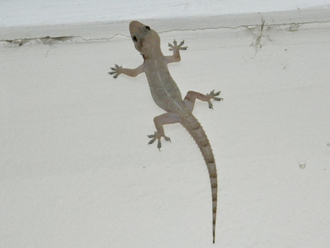The Gates and other foundations, leading agro-industrial firms, and some African policymakers are championing a "Green Revolution II" to ensure food security. But despite the fanfare and good intentions, this misguided approach will probably do more harm than good.
The approach they are advocating, (modelled after the post-Second World War Green Revolution that used technology to boost farm yields) is grounded in manipulating seeds and increasing synthetic fertilisers to improve production. It is the very approach that has been pushed on Africa over the past 50 years.
But Africa is no more food secure than it was at the start of the 20th century. That won't change just because aid groups put more money, more science, or more business savvy behind the same old approach.
There are at least three reasons why.
First, scientists are focusing on how to grow bigger, more, and disease- and pest-resistant plants. Their approach views the soil surrounding plants as a "problem" to overcome, rather than the very habitat in which they can thrive. The entire focus is on how to manipulate the plants rather than how to produce both healthy plants and healthy soil.
Astonishing.
Second is the fact that some 70 per cent of Africa's landscape is grassland — arid, semiarid, temperate, and some tropical. Kenya, for example, is 80 per cent grassland. The practices and inputs required to use revolutionary seeds in these lands are destructive.
Africa's once vast, healthy savannas were produced by the hoofs and manure of vast herds of grazing animals and pack-hunting predators.
Turning those lands into crop fields will have the same effect it produced on the Great Plains of the United States — the collapse of the grasslands and the soil, river systems, and the groundwater supplies that lie beneath them. Consider the recent depletion of the Ogallala aquifer that lies beneath a large portion of the Great Plains.
Consider the consequences
Finally, and most important, these approaches to increasing food security focus on production without considering the social, economic, and biological consequences. Increased food production, at the expense of soil, water, and a community's social fabric, is like taking one step forward only to take three steps back.
What Africa needs is a revolution that mobilises people to focus on local inputs and practices that produce food that grows in healthy soil (maybe a "brown revolution") and that enhances the social and economic fabric of the community and nation. Guess what? That brown revolution is possible and sustainable right now.
For Africa (and all grassland regions of the world), the work of Allan Savory should be top priority. Savory and a team of Zimbabwean staff at the Africa Centre for Holistic Management in Zimbabwe have achieved promising results using livestock they already had as their No 1 tool.
They have also achieved successful results over the past five years without spending one dime on expensive research into seeds, genetically modified organisms, root manipulation, climate change adaptation, herbicides, fertilisers, or pesticides, and without special planting or harvesting equipment.
Instead, they focus funds on educating local people in practices that blend some older pastoral knowledge and techniques of animal herding with new understanding of how grazing animals, soils, plants, and organisms coevolved and function in a healthy state.
If we are truly serious about helping Africa, we will not go the route currently being promoted under the Green Revolution II — no matter what appearance of sincerity, talented corporate management, or amount of money there is behind it. Does this mean we should not support technological innovation? Of course not.
But what we must do is find and support those technologies that not only solve a problem or achieve an objective, but also maintain or enhance the social, financial and biological fabric of the whole system over the long term.
Shannon Horst, CEO of The Savory Institute, has worked in agriculture in Africa, the US, and other regions for 20 years.









